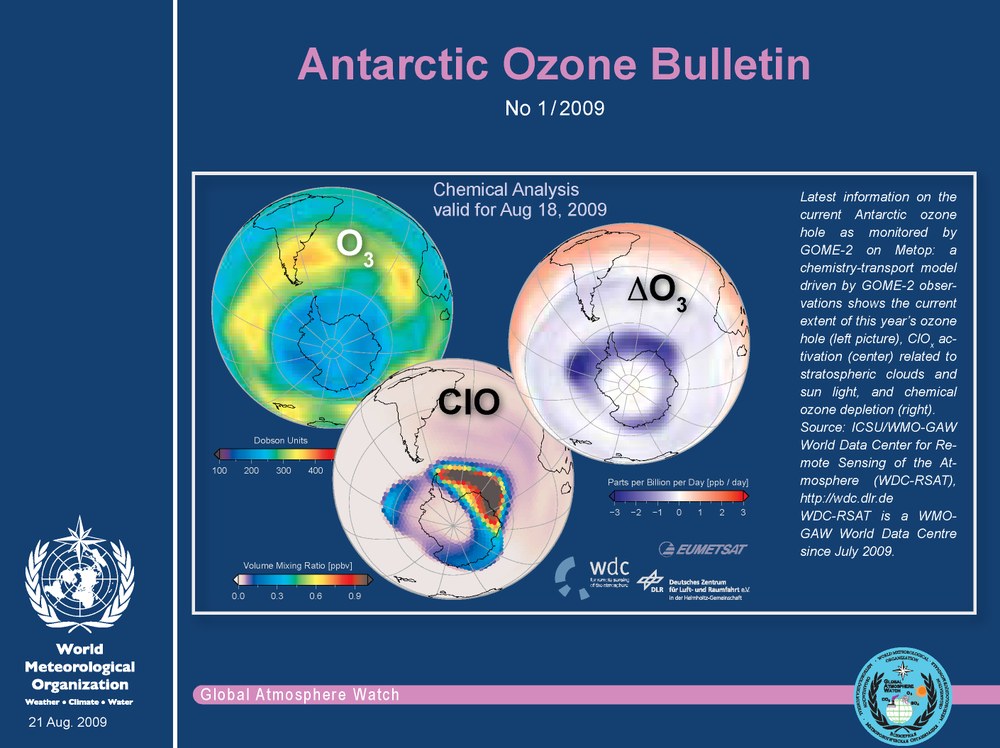Team: Trace Gases
Satellite-based trace gas data products are being developed for use in early warning systems, environmental monitoring, health services and climate research. The foundation is synergetic use of atmosphere models and measurement data. This work is stimulated by scientific competition and cooperation with strong and reputable partners. The primary goals are to raise the level of available professional expertise and to develop new fields of business.
Air quality and atmospheric ozone are topics with immediate relevance for health. The Trace Gases team is engaged in research projects aimed at particular user and risk groups and which can serve as models. The Atmosphere department set a milestone in making available European-wide chemical ensemble forecasts by establishing the “Integrated Air Quality Platform” (IAQP) as part of the ESA GSE PROMOTE project. This approach will be further developed in the context of additional projects, primarily PASODOBLE and PAQ. IAQP designates a so-called multimodel platform which takes various European air quality models into account to provide 72-hour forecasts for the most important atmospheric pollutants. PAQ will represent a step toward combining model and measurement data for the purpose of generating European-wide air quality maps.
A leadership role in operational data assimilation is assumed in the area of timely analyses of chemically reactive trace gases in the stratosphere.
A well-recognized user is SPARC, as part of the World Climate Research Program WCRP of the World Meteorological Organization WMO. A contribution is also made to the work of IPCC. The team makes use of two different methodologies, ROSE/DLR and SACADA. Worldwide, SACADA is the most modern four-dimensional variational chemical data assimilation system (4Dvar) currently available worldwide. The primary advantage of the 4Dvar concept is the capability to derive quantities which have not been measured. Assimilation systems are also becoming increasingly important for validating satellite data.
The early warning system EXUPERY and PROMOTE SACS for volcanic eruptions, both developed with support from the team, represent another important field of activity. Measurements of SO2 recorded by the GOME-2 sensor are used to detect eruption clouds. In addition to the geographic location, source terms are approximated with the help of Lagrange models (FLEXTRA and FLEXPART). These methodologies are used to investigate the long-distance transport of trace gases and their relevance for the climate.
Monitoring the environment at the regional level is an important topic being addressed in several research and development projects because of its future relevance. Examples are the identification of weather conditions problematic for health, or pollutant loads affecting Bavaria, and the establishment of an environmental monitoring system for Saudi Arabia. These projects have in common an innovative combination of various data sources (satellites, ground stations) and their incorporation in an air quality forecast system, POLYPHEMUS/DLR. For Saudi Arabia, the aim is to derive combined dust, aerosol and trace gas analyses. A particular future challenge is multiscale analysis, meaning a standardized consideration of urban, regional and global contexts.

